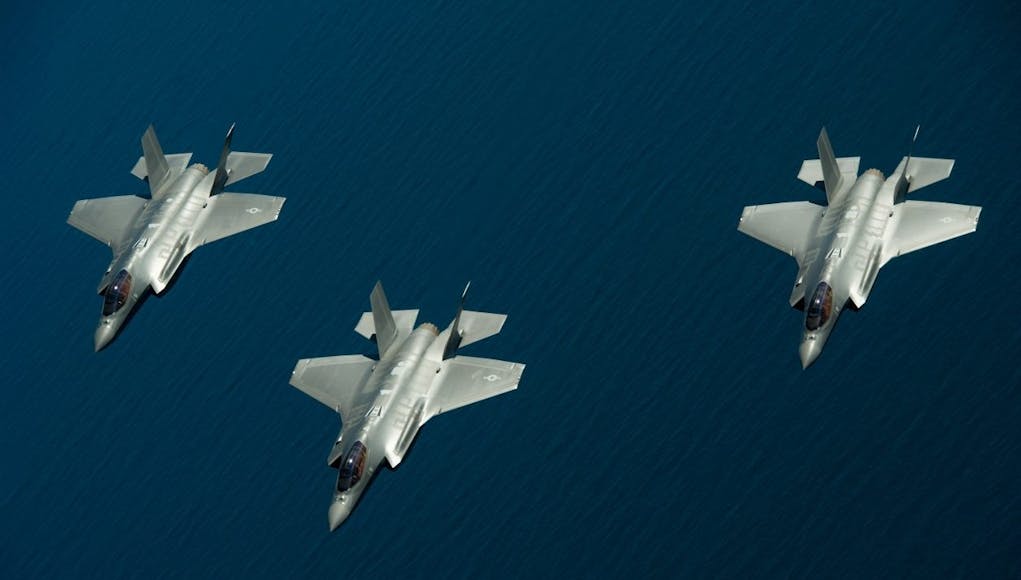General Hawk Carlisle, Air Combat Command commander, declared the F-35 the “key component of fusion warfare.”
Carlisle said:
“It changes the game. It is going to be the difference maker and the backbone of the interoperability capabilities of the future.”
According to a US Air Force press release:
“As a fifth-generation fighter, the F-35A provides unprecedented global precision attack capability against current and emerging targets.
The aircraft incorporates state-of-the-art sensor fusion, networked interoperability and a broad array of advanced air-to-air and air-to-surface munitions enabling unmatched lethality for decades.”
Gen. Scott Pleus, the F-35A integration office director said:
“In terms of lethality and survivability, the aircraft is absolutely head and shoulders above our legacy fleet of fighters currently fielded. This is a formidable airplane and one our adversaries should fear.”
In June 2016, seven F-35As conducted combat testing scenarios at Mountain Home AFB, Idaho. The two-week deployment reportedly established the aircraft’s combat readiness with 88 sorties planned and executed.
Lt. Gen. Chris Bogdan, the F-35A Joint Strike Fighter executive officer said:
“The program itself is making progress. The mark of a good program is not that you don’t have any problems, but that you find things early, you fix them and you move on.”
Recently, F-35 and Aegis Weapon System worked together for the first time during a live fire exercise, with the F-35 passing sensor data to another platform which then engaged the target.
Using the F-35 as a broad area sensor can significantly increase a warships ability to detect, track and engage a target.
An unmodified US Marine Corps F-35B from the Marine Operational Test and Evaluation Squadron, based in Edwards Air Force Base, acted as an elevated sensor to detect an over-the-horizon threat.
The aircraft then sent data through its Multi-Function Advanced Data Link to a ground station connected to USS Desert Ship, a land-based launch facility designed to simulate a ship at sea.
Using the Aegis Weapon System Baseline 9.C1 and a Standard Missile 6, the system successfully detected and engaged the target.
The exercise was the first live fire missile event that successfully demonstrated the integration of the F-35 to support Naval Integrated Fire Control-Counter Air (NIFC-CA).
Dale Bennett, executive vice president, Lockheed Martin Rotary and Mission Systems said:
“NIFC-CA is a game changer for the US Navy that extends the engagement range we can detect, analyze and intercept targets. The F-35 and Aegis Weapon System demonstration brings us another step closer to realising the true potential and power of the worldwide network of these complex systems to protect and support warfighters, the home front and US allies.”
In a press release, the US Navy said:
“While the goal of this test was to prove the compatibility of these systems within existing NIFC-CA architecture, this future capability will extend the Navy’s engagement range to detect, analyze and intercept targets in operational settings. Using any variant of the F-35 as a broad area sensor, the aircraft can significantly increase the Aegis capability to detect, track and engage.”













